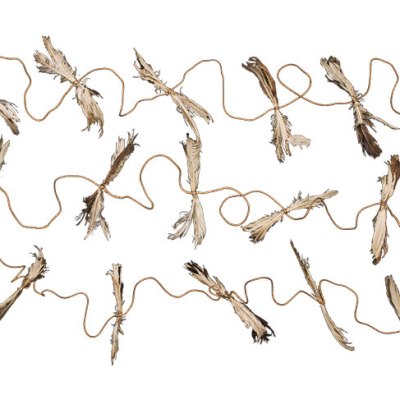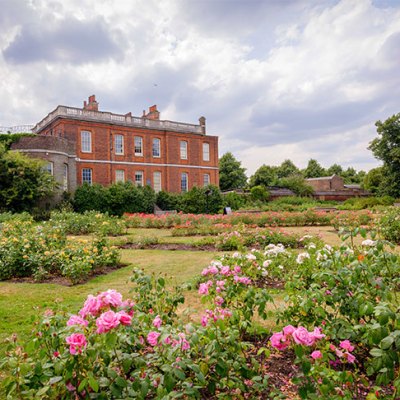In an offbeat museum in Los Angeles lie piles of decaying dice. Some are cracked and flaking, others cleft in two, revealing desiccated, crystalline innards. Donated by a famous Hollywood magician, these miniature ruins are made of celluloid, a synthetic plastic with a habit of disintegrating suddenly after decades of stability. It was this unfortunate property that caused most of the movies from the silent era to crumble into dust.
‘Rotten Luck’, as this exhibit is playfully titled, might be read as a wry tribute to all the dreamers and chancers who came to LA to seek their fortunes and failed. But it is by no means the strangest, or most suggestive, exhibit in the Museum of Jurassic Technology. Here you will find a sculpture of Napoleon in the eye of a needle, ‘micromosaics’ made from the scales of butterfly wings , extinct French moths, Soviet space dogs and various cat’s cradles. Behind a nondescript door on a traffic-choked boulevard in Culver City, natural and man-made arcana jostle in a modern-day Wunderkammer that calls to mind that well-known quip by Frank Lloyd Wright: ‘Tip the world over on its side and everything loose will land in Los Angeles.’
A microminiature sculpture of Napoleon in the eye of a needle by Hagop Sandaldjian. Museum of Jurassic Technology, Los Angeles

There are plenty of bizarre museums in LA, but few worth visiting. At best, the Museum of Death and the ‘Velveteria’ museum of velvet paintings cater to niche tastes, while the museum of psychiatry (‘Psychiatry: An Industry of Death’) and an ‘Egyptian Museum’ are museums in name only: one is a Scientology-funded propaganda project, the other a gift shop flogging crystals and chakra oils on the Venice Beach Boardwalk. Impostors should be expected in the capital of make-believe.
The Museum of Jurassic Technology stands apart from these tawdry sideshows – this despite its wacky name, which even the staff find embarrassing. But the label had stuck by 1988, when the museum settled in its current premises after four years as a travelling roadshow. The museum’s co-founder and director, David Wilson, hasn’t quite abandoned the idea of an itinerant life, residing in a mobile home out back. The museum acknowledges a debt to Charles Willson Peale’s Philadelphia Museum, a Rousseauian establishment that sought to educate men, women and children alike by means of ‘rational amusement’. More influential are earlier European cabinets of curiosities, which aimed to instil a sense of wonder in the viewer by assembling a universe in microcosm: a theatre of the world that it seems appropriate to recreate on the sprawling stage set of LA.
There are knowing nods here to such pre-Enlightenment collections. A horn from a Cheshire woman’s head, one of the English naturalist, gardener and collector John Tradescant’s lost rarities, is exhibited here in replica; an entire hall is dedicated to Athanasius Kircher, the 17th-century polymath whose own Wunderkammer in Rome ranked among Europe’s most celebrated. Upstairs, refreshments are poured for visitors in a Russian tea room, perhaps recalling Peter the Great’s Kunstkammer, which attracted the St Petersburg crowds with free coffee and vodka. As in those early museums, the occasional hoax crops up: a deadpan, pseudo-scientific exhibit explains how the Piercing Devil, a putative South American bat, can fly through walls.
A micromosaic assembled from the scales of butterfly wings by Henry Dalton. Museum of Jurassic Technology, Los Angeles

Unlike those early collections, however, the museum places little value on the rarity or preciousness of its objects. Its proper currency is the play of ideas. Esoteric or buried branches of thought such as Russian Cosmism are exhumed to provoke wonder and raise questions. As one exhibit of imitation Proustian madeleines seems to imply, this is not so much a collection as a recollection.
Cabinets of curiosity predated attempts at taxonomy. They belong to the Renaissance, an age in which all things might interconnect or transmute in a vast web of metaphor and symbol. So, here, can threads be drawn between exhibits. One room traces the evolution of the mobile home in America back to Mary Elliott Wing, who saw her pioneering vehicle as a ‘land ark’ in which to sail the rough seas of the Great Depression, her belongings safely stowed on board. We are reminded of a scale model of Noah’s Ark, in the first room of the museum, described as ‘the most complete museum of natural history the world has ever seen’. We might also recall that before moving to the Ashmolean Museum, Tradescant’s collection was housed in a building in Vauxhall called the Ark.
So mobile homes become arks and then, in turn, accidental museums. Here are four cases of artefacts – among them decorative bottles, gemstones and embroidery – drawn from the personal possessions of different mobile-home owners. The visitor is invited to reconsider what museums ought to contain, what might be meant by a collection. This is partly a museum about museums.
Some will find the Museum of Jurassic Technology maddening in its whimsy. But in an age of infinite information, it can be easy to forget how little we really know about the world into which we were born. Perhaps a museum that inspires wonder is more useful than one that prioritises knowledge. Los Angeles, itself something of a cabinet of curiosities at the end of the world, seems a fitting place to pose such questions.
From the March 2019 issue of Apollo. Preview and subscribe here.


